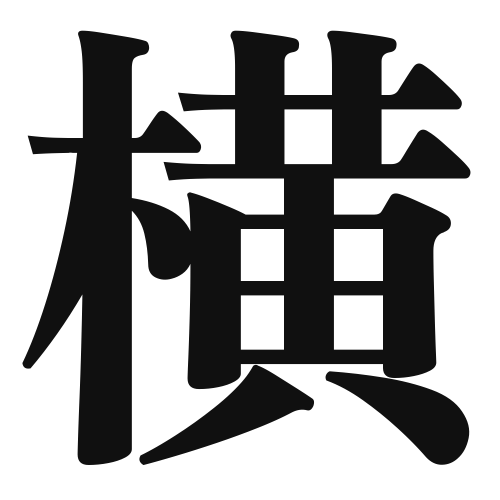1. Overview of Meaning
The kanji “横” (yoko) means “horizontal” or “sideways.” It is often used to describe something that is oriented from left to right, as opposed to vertical or upright positions.
2. Formation and Radical
Formation of the Kanji: The kanji “横” is a compound character (会意文字) that combines elements to convey its meaning. It consists of the radical “氵” (water) and the character “翁” (old man), which together suggest the idea of something lying flat or spread out, similar to how water flows horizontally.
Radical: The radical for “横” is “氵,” which is related to water and often appears in kanji associated with fluidity or movement.
3. Examples of Usage
Common Words and Phrases:
- 横断 (おうだん, ōdan) – crossing (as in a street)
- 横顔 (よこがお, yokogao) – profile (side view of a face)
Example Sentences in Daily Conversation:
- この道は横断歩道があります。 (This road has a pedestrian crossing.)
- 彼の横顔はとても美しいです。 (His profile is very beautiful.)
4. Synonyms and Antonyms
Similar Kanji:
- 横たえる (よこたえる, yokotaeru) – to lay down (something) horizontally.
- 平 (へい, hei) – flat, level (referring to a surface).
Opposite Kanji:
- 縦 (たて, tate) – vertical, upright.
5. Cultural and Historical Background
Relation to Japanese Culture: The concept of “横” is significant in various aspects of Japanese culture, including art and architecture, where horizontal lines often symbolize stability and calmness.
Proverbs and Idioms:
- 横のつながり (よこのつながり, yoko no tsunagari) – horizontal connections, referring to relationships or networks among peers.
